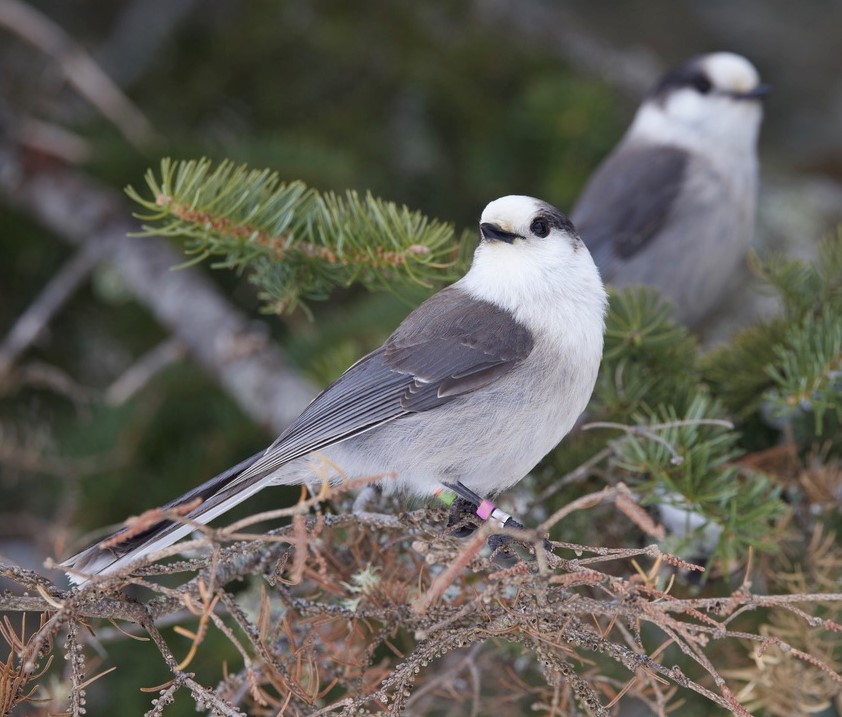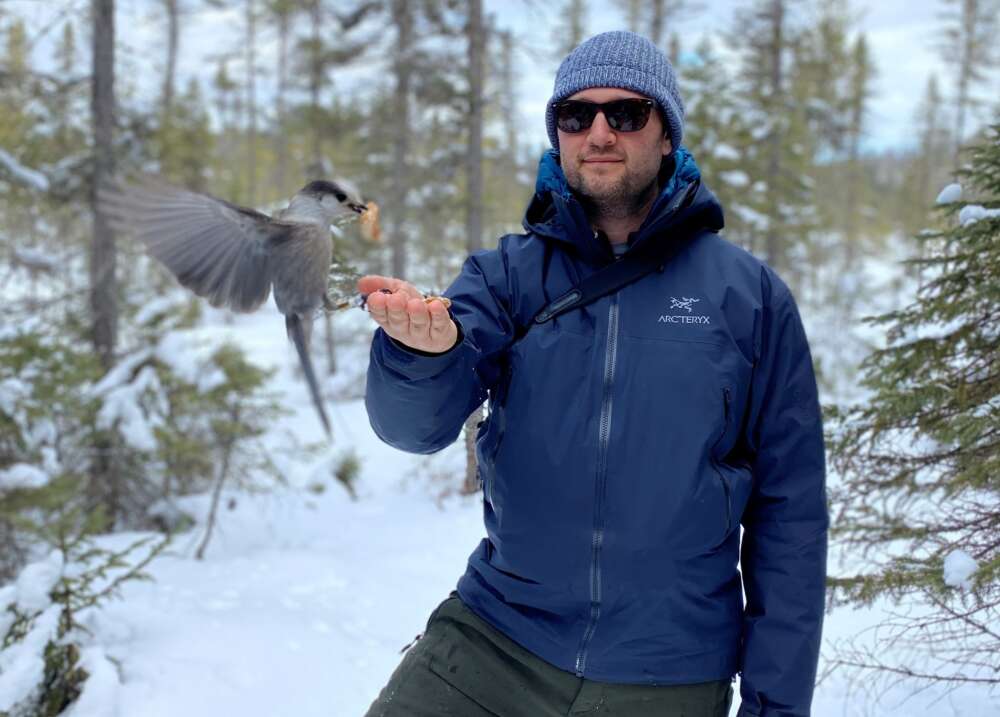
Many families have youngsters who squabble, but for Canada jays, the fighting is intense and eventually leads to exile for the weaker siblings, with the right to stay on home territory going to the victorious “family bully.”
Now University of Guelph researchers in the College of Biological Science have calculated the costs of that early-life sibling rivalry – as well as the benefits to the dominant family bully.
The findings appear in the Proceedings of the Royal Society B.
Canada jays, which live mostly in Canada’s boreal forest, are one of only two bird species in the world in which the siblings fight for dominance and the right to remain in the territory.
When the fledglings are about six weeks old, they begin a multi-day battle that sees one dominant juvenile force its siblings out of the family territory, winning the right to remain with the parents for their first year.
The ejected siblings must either try to establish a new territory far away or join an unrelated pair nearby. Given the challenges of finding a new home as well as gathering a large cache of food to prepare for the cold boreal winter, ejected Canada jays often fail to survive their first year.
Early sibling conflict ‘odd behaviour to observe in nature’

A U of G team of researchers led by Department of Integrative Biology professor Dr. Ryan Norris has been studying these unique birds in Ontario’s Algonquin Provincial Park for decades. His team found that starvation and predation are common among ejected fledglings, with the mortality rate in that first year as high as 80 per cent.
“Given the high cost to the siblings, that early sibling conflict is odd behaviour to observe in nature,” said Norris. “Generally, most species don’t want to do harm to their siblings because they share half your gene pool.”
Just as puzzling is the fact that the dominant jay appears to offer no benefit to its parents by remaining on their territory.
“Many species that stay with their parents lose a year to reproduce so they can help the next generation because the benefits they bring to future siblings outweigh the sacrifice of not breeding,” said lead author Dr. Matthew Fuirst, who completed the research for his PhD.
But dominant juvenile Canada jays don’t breed that year and generally do not help with the next year’s nestlings.
“It’s like they get to stay in their parents’ basement, get easy access to their food, live in a familiar neighbourhood with some protection, but don’t contribute much,” said Fuirst. “Meanwhile they’ve kicked out their siblings and perhaps doomed them.”
In biological terms, a dominant Canada jay hurts its “indirect fitness” because its siblings do not go on to have good reproductive success or good survival.
Weigh costs of sibling conflict against benefits

“We wanted to calculate the costs of that behaviour and weigh it against the benefits because we knew there must be some benefit for why the dominant juveniles do this,” said Fuirst.
They examined 58 years of Canada jay nesting data in Algonquin Park, gathered with the help of co-author and now-retired biologist Dan Strickland, and conducted several years of radio tracking of fledglings to determine how each fared.
They found that dominant juveniles had substantially higher rates of reaching adulthood after ejecting their siblings. They also went on to have more offspring over their lifetimes — which can be as long as 17 years — than their ejected siblings.
“So, it appears that harsh sibling conflict early on leads to lifetime benefits for the dominant juvenile,” said Fuirst. “Our analysis suggests dominant juvenile jays have almost twice the inclusive fitness of their siblings.”
Understanding Canada jays’ behaviour is critical as their populations on their southern border face challenges. Warming associated with climate change is leading to more freeze-thaw events that are damaging the jays’ caches of perishable food, previous U of G research has found, and the number of occupied jay territories in Algonquin has fallen by almost 75 per cent from their recorded highs.
“This is one of the first studies to quantify the cost of kicking out your siblings. It’s a remarkable behaviour,” said Norris. “Unfortunately, because of climate change, we likely won’t have Canada jays for too much longer in Algonquin Park.”
This research was supported by the Natural Sciences and Engineering Council of Canada, the American Ornithological Society, the Society of Canadian Ornithologists, and the Weston Family Foundation Fellowship Program, a program of the Wildlife Conservation Society Canada funded by the Weston Family Foundation.
Contact:
Dr. Ryan Norris
rnorris@uoguelph.ca
Dr. Matthew Fuirst
mfuirst@uoguelph.ca
